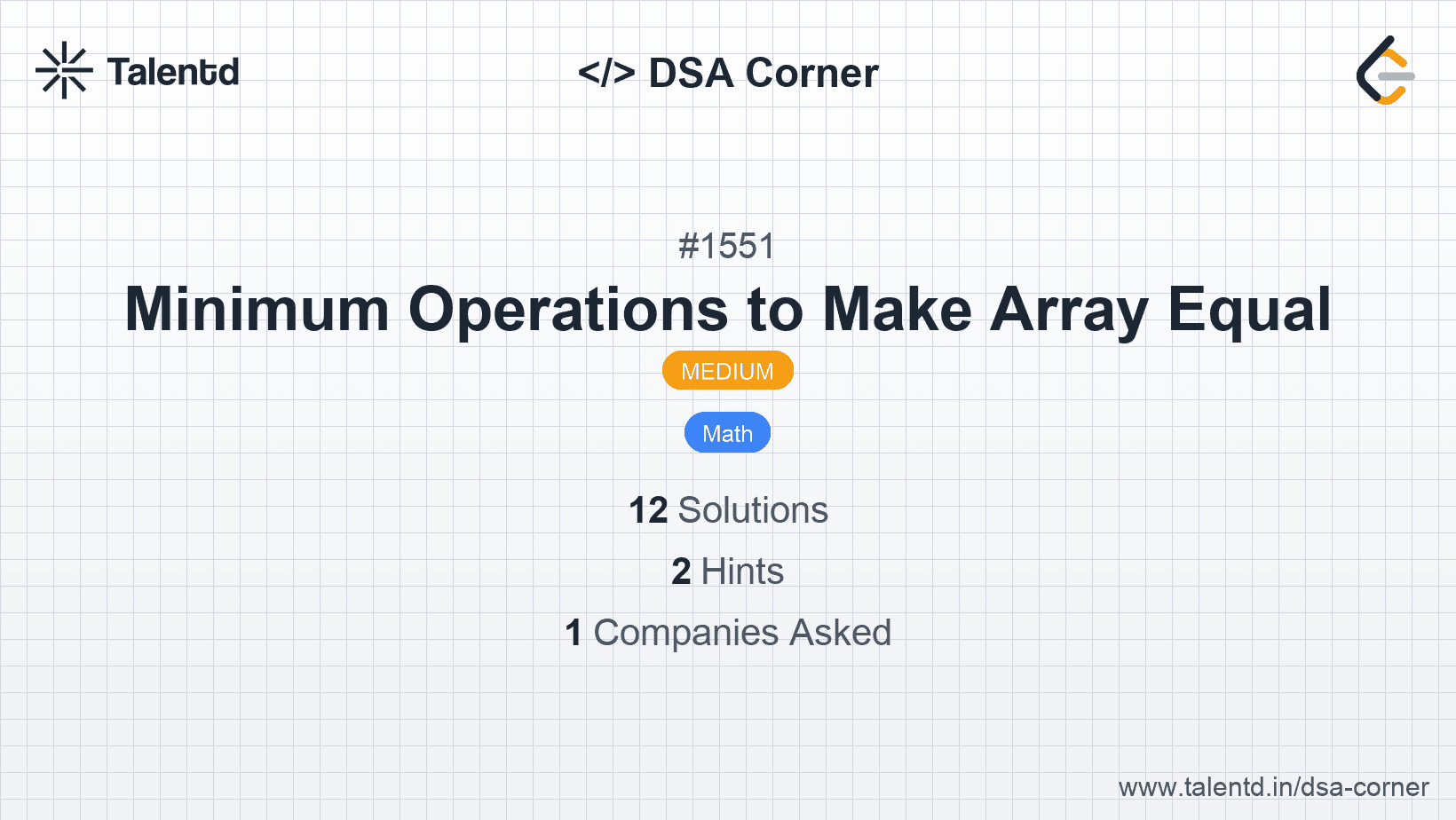
Sponsored
Sponsored
The array arr follows the pattern (2 * i) + 1, making it an arithmetic sequence of odd numbers. The median of the arithmetic sequence is the middle element for odd n and the average of two middle elements for even n. Since operations have to balance the values to become equal, the number of operations required is essentially the sum of steps needed to make the greater half equal to this median, iterating from the middle outwards.
Time Complexity: O(1), since the solution simply computes a formula.
Space Complexity: O(1), as no additional space is required.
1#include <stdio.h>
2
3int minOperations(int n) {
4 int half = n / 2;
5 return half * (half + (n % 2 == 0 ? 1 : 0));
6}
7
8int main() {
9 printf("%d\n", minOperations(3)); // Output: 2
10 printf("%d\n", minOperations(6)); // Output: 9
11 return 0;
12}The C approach aligns closely with other language implementations, using divide-and-conquer for the sequence simplification towards the center.
This approach demonstrates a naive simulation of operations: iteratively balance the array elements by focusing on reducing extreme disparities between elements. This is not intended for efficiency but understanding the process.
Time Complexity: O(n^2), due to nested iterations looking for disparities.
Space Complexity: O(n), to store the array.
1#include <vector>
#include <algorithm>
using namespace std;
int minOperationsNaive(int n) {
vector<int> arr(n);
for (int i = 0; i < n; ++i) {
arr[i] = (2 * i) + 1;
}
int target = accumulate(arr.begin(), arr.end(), 0) / n;
int cnt = 0;
bool balanced = false;
while (!balanced) {
balanced = true;
for (int i = 0; i < n; ++i) {
if (arr[i] > target) {
for (int j = 0; j < n; ++j) {
if (arr[j] < target) {
arr[i]--;
arr[j]++;
cnt++;
balanced = false;
break;
}
}
}
}
}
return cnt;
}
int main() {
cout << minOperationsNaive(3) << endl; // Output: 2
cout << minOperationsNaive(6) << endl; // Output: 9
return 0;
}C++ simulation involves explicit looping and adjustment of array elements to balance against the target after calculation of expected totals.